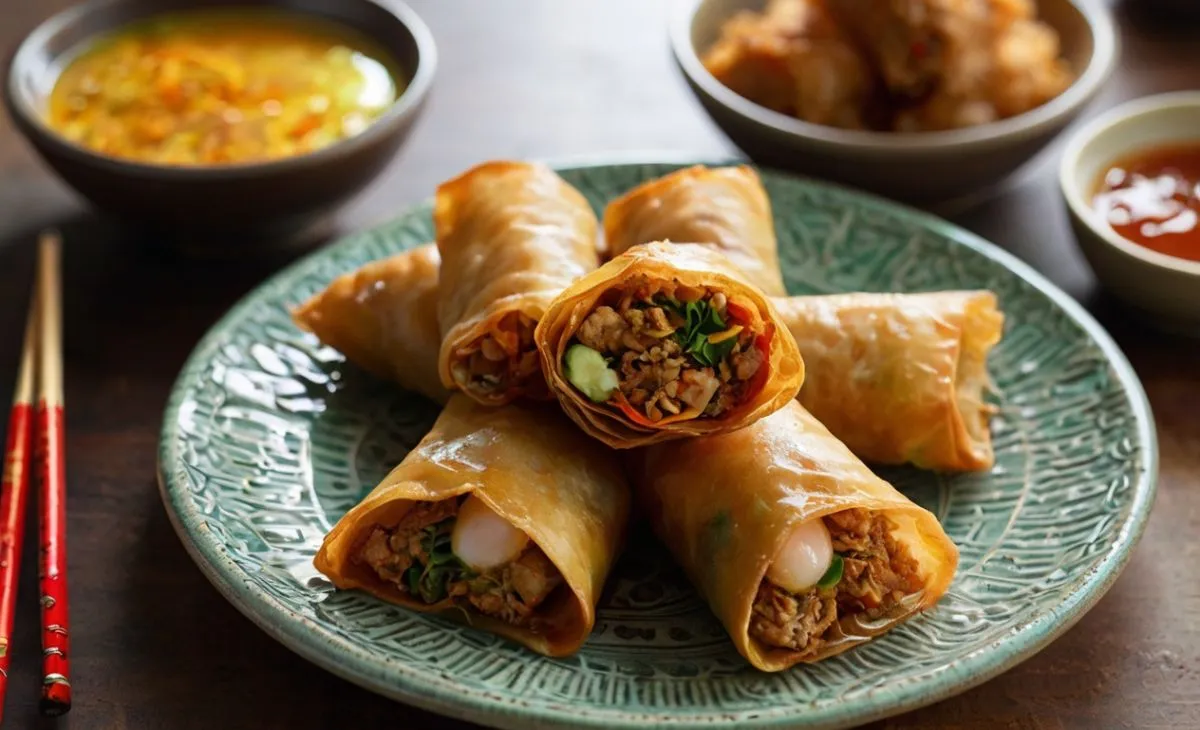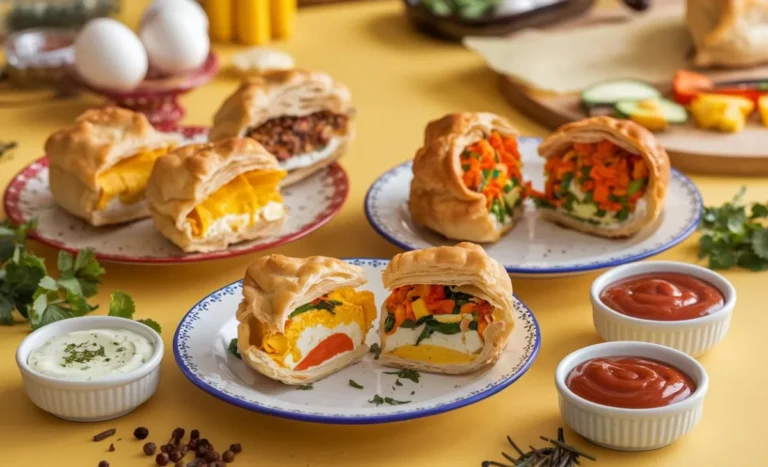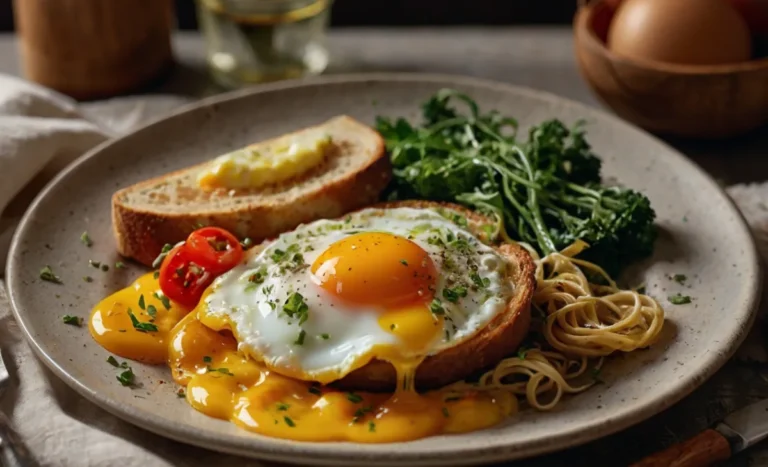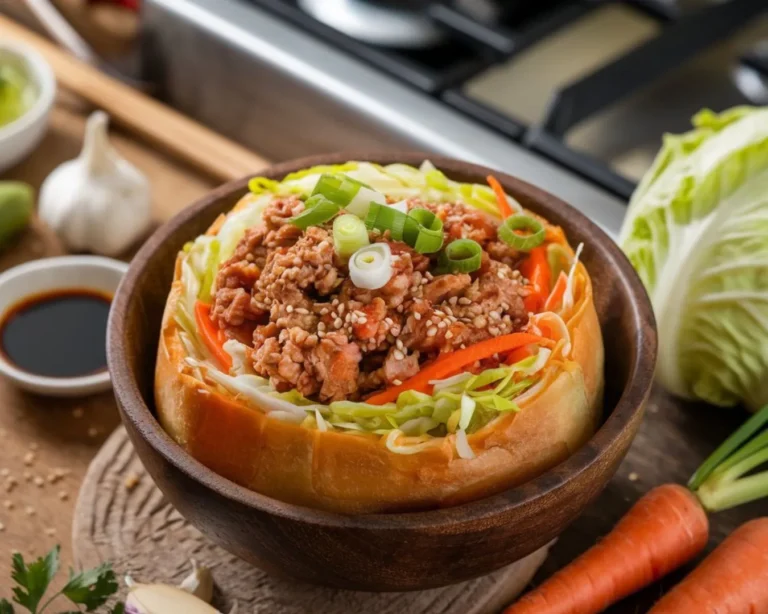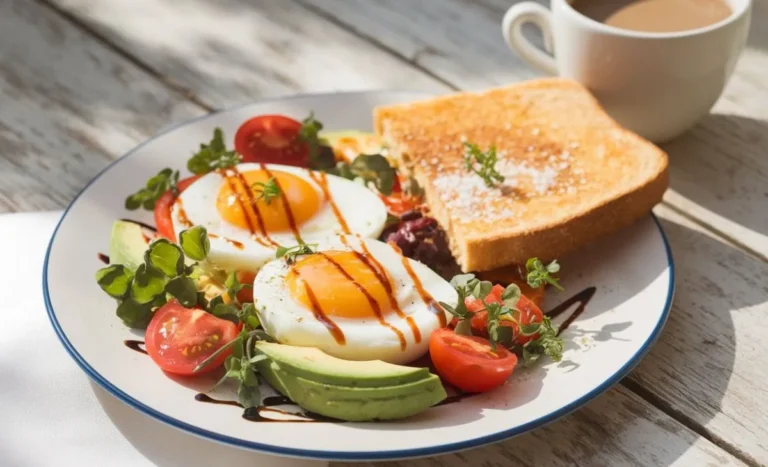Authentic Vietnamese Egg Roll Recipe: How to Make Crispy Rolls at Home
Introduction to Vietnamese Egg Rolls and Their Cultural Significance
Vietnamese egg rolls, also known as cha gio, hold a special place in Vietnamese cuisine. These crispy rolls are filled with a flavorful combination of ground pork, shrimp, and vegetables, making them a delightful dish for any occasion. For those looking to bring authentic flavors to their kitchen, learning a Vietnamese egg roll recipe is essential. Not only do they make a delicious appetizer, but their golden crunch is also hard to resist.
Cultural significance surrounds Vietnamese egg rolls, as they are often served during family gatherings, celebrations, and holidays. Traditionally, these rolls are enjoyed wrapped in fresh lettuce and herbs, then dipped into a savory sauce called nuoc cham. This practice highlights the balance of textures and flavors in Vietnamese cooking, a key aspect of their culinary art. Understanding this cultural context adds depth to the experience of making your own Vietnamese egg roll recipe.
The ingredients for Vietnamese egg rolls vary by region, but the essence of the dish remains the same: a blend of protein, vegetables, and spices wrapped in rice paper and fried to perfection. By following an authentic Vietnamese egg roll recipe, you’ll be able to recreate this beloved dish in your own home. Whether you’re hosting a party or simply cooking for family, these egg rolls will impress.
Mastering the Vietnamese egg roll recipe allows you to connect with a rich culinary tradition. As you cook and serve these rolls, you’re not just enjoying a delicious treat—you’re also celebrating Vietnamese culture. The combination of flavors and the technique used in crafting these rolls reflects generations of tradition passed down through families.
Essential Ingredients for Making Authentic Vietnamese Egg Rolls
Creating an authentic Vietnamese egg roll recipe starts with gathering the right ingredients. Each element plays a crucial role in achieving the perfect balance of flavors and textures. From the filling to the wrapper, every component must be carefully selected to ensure your rolls are as close to traditional as possible. With the right ingredients on hand, making these crispy delights at home becomes an enjoyable and rewarding experience.
The core ingredients for Vietnamese egg rolls typically include ground pork, shrimp, and finely shredded vegetables. Carrots, taro, and wood ear mushrooms are common additions, bringing texture and flavor to the filling. Combining these ingredients creates a savory mixture that is both light and satisfying. Choosing fresh, high-quality ingredients will elevate the taste of your Vietnamese egg roll recipe.
Rice paper wrappers are essential to the authenticity of Vietnamese egg rolls. These thin, translucent sheets become crispy when fried, giving the rolls their signature crunch. Before wrapping, the rice paper is slightly moistened to make it pliable. This step ensures your rolls are tightly sealed, preventing any filling from spilling during frying. Finding the right rice paper can make all the difference in achieving the perfect roll.
To complete your Vietnamese egg roll recipe, don’t forget the dipping sauce. The traditional sauce, known as nuoc cham, is a mixture of fish sauce, lime juice, sugar, and chili. This tangy, savory sauce perfectly complements the crispy rolls, adding a burst of flavor with every bite. Serving your egg rolls with fresh lettuce and herbs like mint or cilantro enhances the overall experience and adds a refreshing contrast to the fried rolls.
Step-by-Step Guide to Preparing the Egg Roll Filling
Preparing the perfect filling is the heart of any Vietnamese egg roll recipe. A well-balanced mix of flavors and textures ensures your egg rolls turn out both delicious and authentic. Whether you’re a beginner or experienced in Vietnamese cuisine, following a step-by-step guide will make this process easier and more enjoyable. Let’s dive into the detailed instructions for making the best egg roll filling.

Ingredients You’ll Need:
- 1 pound ground pork
- 1/2 pound shrimp, peeled and minced
- 1 cup shredded carrots
- 1/2 cup finely chopped wood ear mushrooms
- 1/2 cup shredded taro or jicama
- 2 cloves garlic, minced
- 1 tablespoon fish sauce
- 1 teaspoon sugar
- 1/4 teaspoon pepper
- 1 egg, lightly beaten
Step 1: Prepare the Meat and Vegetables
In a large bowl, combine the ground pork and minced shrimp. These proteins form the foundation of your egg roll filling, giving it a savory and hearty flavor. Next, add the shredded carrots, taro, and chopped wood ear mushrooms. These vegetables provide a crunchy texture that complements the soft filling. Make sure to finely chop all ingredients to ensure even cooking.
Step 2: Add Seasonings
Now, add the minced garlic, fish sauce, sugar, and pepper to the mixture. Fish sauce gives the filling a unique umami flavor, while sugar adds a touch of sweetness. Stir the ingredients together thoroughly until the seasonings are evenly distributed. This step is crucial to infuse your filling with authentic Vietnamese flavors.
Step 3: Bind the Filling
Finally, mix in the lightly beaten egg. The egg acts as a binder, helping the filling hold together as it cooks. This step ensures your Vietnamese egg roll recipe has a cohesive and moist filling that won’t fall apart during frying. Once mixed, cover the bowl and refrigerate for about 15 minutes to allow the flavors to meld.
How to Properly Roll and Wrap Vietnamese Egg Rolls
Mastering the technique of rolling and wrapping is essential for creating the perfect Vietnamese egg roll recipe. Properly wrapped egg rolls not only hold the filling together but also ensure a crispy, golden exterior when fried. Whether you’re new to making Vietnamese egg rolls or just looking to refine your skills, these tips will help you achieve beautifully wrapped rolls every time.
To begin, soften the rice paper wrappers by lightly dipping them in warm water. The key is not to over-soak them, as they will continue to soften while you work. Lay the softened wrapper on a clean surface, ensuring it remains flat and easy to roll. The wrapper’s pliability is important for achieving a tight roll that holds the filling in place during frying.
Next, place about two tablespoons of your prepared filling in the center of the wrapper. Make sure the filling is evenly spread to avoid lumps. Start by folding the bottom edge of the wrapper over the filling, then fold in the sides to enclose it. This method ensures that the filling stays secure, while the egg roll maintains its shape. The tightness of the wrap directly impacts the crispiness of your Vietnamese egg roll recipe.
Finally, roll the egg roll upward, keeping it as tight as possible without tearing the wrapper. Seal the edges with a bit of water to prevent the roll from unraveling while frying. Once all the rolls are wrapped, you’re ready to fry them to golden perfection. Properly wrapped egg rolls result in a delightful crunch that is key to an authentic Vietnamese egg roll recipe, leaving you with delicious, crispy treats to enjoy.
Frying Techniques for Achieving the Perfect Crisp
Achieving the perfect crisp is crucial when preparing a delicious Vietnamese egg roll recipe. The frying technique you use can significantly affect the texture and flavor of the egg rolls. With the right methods, you can create golden, crunchy rolls that will impress family and friends. Let’s explore the best frying techniques to ensure your egg rolls turn out perfectly every time.
First, choose the right oil for frying. Oils with high smoke points, such as vegetable or peanut oil, work best for deep frying. These oils can withstand higher temperatures without burning, which is essential for achieving that crispy texture. Fill a deep frying pan or wok with enough oil to fully submerge the egg rolls, ensuring even cooking on all sides. Heat the oil to around 350°F (175°C) before adding the rolls, as the right temperature is key to getting them crispy.
Next, fry the egg rolls in small batches to avoid overcrowding the pan. When too many rolls are added at once, the oil temperature can drop, resulting in soggy rolls. Instead, fry three to four egg rolls at a time, allowing them space to float freely. Turn the rolls occasionally to ensure they brown evenly, and monitor their color closely. This attention to detail will lead to perfectly cooked egg rolls with an irresistible crunch.
Finally, once the egg rolls are golden brown and crispy, remove them from the oil and place them on a paper towel-lined plate. This step helps absorb excess oil, keeping your rolls light and crispy. Allow them to cool slightly before serving. By following these frying techniques, your Vietnamese egg roll recipe will yield delightful, crunchy rolls that are sure to be a hit at any gathering. Enjoy them with a side of fresh herbs and dipping sauce for a complete experience!
Dipping Sauces to Pair with Your Homemade Egg Rolls
When it comes to enjoying your homemade Vietnamese egg roll recipe, a flavorful dipping sauce can elevate the experience. The right sauce enhances the crispy rolls and adds an extra layer of taste. Traditionally, Vietnamese egg rolls are served with nuoc cham, a savory and tangy sauce that perfectly complements the rolls. Let’s explore some delicious dipping sauces that pair beautifully with your crispy creations.
Nuoc cham is a classic dipping sauce made from fish sauce, lime juice, sugar, and garlic. This sauce brings a delightful balance of flavors—sweet, sour, and salty. To prepare nuoc cham, simply combine 1/4 cup of fish sauce, 1/4 cup of water, the juice of one lime, and two tablespoons of sugar. Stir until the sugar dissolves, then add minced garlic and chopped chili for an extra kick. This sauce not only enhances the taste of your Vietnamese egg rolls but also offers a refreshing contrast to the richness of the fried filling.
Another excellent option is hoisin sauce, which provides a sweet and thick alternative. Hoisin sauce can be served as is or mixed with a splash of vinegar and chopped peanuts for added texture. Simply pour some hoisin sauce into a small bowl and garnish it with crushed peanuts and chopped green onions. This combination offers a unique twist on traditional dipping sauces and pairs well with the crispy exterior of the egg rolls.
For those who enjoy a bit of heat, a chili garlic sauce is an excellent choice. Combine equal parts of chili paste and soy sauce, adding minced garlic and a splash of vinegar for depth. This sauce adds a spicy kick that complements the savory flavors of the egg rolls beautifully. With these delicious dipping sauces at your fingertips, your Vietnamese egg roll recipe will be a flavorful hit that keeps everyone coming back for more!
Tips for Serving and Storing Vietnamese Egg Rolls
Serving and storing your homemade Vietnamese egg roll recipe properly can enhance the overall dining experience. With their crispy texture and savory filling, these egg rolls are a delightful treat for any occasion. To ensure your rolls maintain their deliciousness, follow these tips for serving and storing.
When serving your egg rolls, presentation matters. Arrange them on a beautiful platter with fresh lettuce, herbs, and lime wedges. This colorful display not only looks appealing but also adds freshness to the meal. Pair the egg rolls with a selection of dipping sauces, such as nuoc cham or hoisin sauce, to provide variety. This way, guests can choose their preferred sauce, enhancing their enjoyment of your Vietnamese egg roll recipe.
If you plan to serve your egg rolls at a gathering, consider frying them just before serving. This ensures they retain their crispy texture and warmth. If you need to prepare them in advance, under-fry the egg rolls until they are lightly golden. Then, allow them to cool and store them in an airtight container in the refrigerator. When it’s time to serve, simply reheat them in hot oil for a few minutes until they are crispy and golden.
For storing leftover egg rolls, allow them to cool completely before placing them in an airtight container. They can be refrigerated for up to three days. To reheat, place them in a preheated oven at 350°F (175°C) for about 10 minutes, ensuring they regain their crispiness. Alternatively, you can re-fry them in hot oil for a few minutes. With these tips, you can enjoy your Vietnamese egg roll recipe fresh and delicious, whether serving them at a party or enjoying them later!
Best Carrot Cake in Colorado Springs: Step-by-Step Cream Cheese Frosting Recipe for Home Bakers

